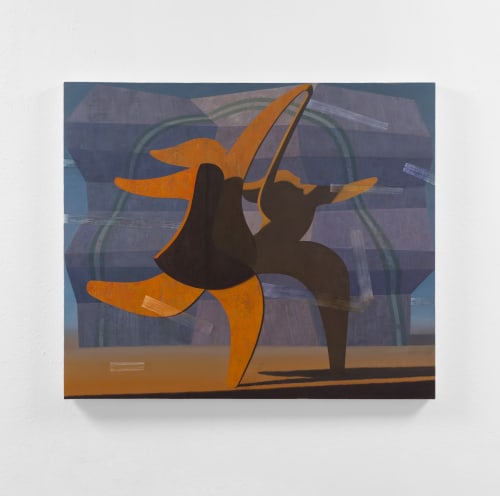Both Daniel Dove and Tom McGrath fuse abstract and realistic conventions in their work, giving life to images that tacitly argue for the capacity of oil paint on canvas to capture the material conditions of modernity. The centerpiece of the show is Dove’s monumental “Eye of Providence” (2007), an unlikely admixture of Magic Realism and the analytical abstraction of Gerhard Richter. This painting shows a carefully installed Citgo sign in the center of a luminous industrial basement full of dripping paint and graffiti. Then, apparently suspended from an elaborate system of pipes, there is a swirling red sculptural form rendered in chunky, collage-like oil paint. To create this uncanny space, Dove used a variety of techniques including 3D computer modeling, manipulated photography, and scale models; all of them, in the context of the painting, create a highly heterogeneous visual field. “Eye of Providence” suggests that the compound effect of the various imaging devices haunts the way we perceive the ad hoc vistas that are the most prominent aspect of American urban and suburban life.
McGrath’s paintings, on the other hand, are more conventionally photo-dependent, and abrupt croppings at the edges suggest that the paintings record only the information captured in their source photograph. As the titled indicates, “TBT (Night Grid)” is an aerial view of a shimmering cityscape at night, a familiar and schematically simple subject selected presumably for its capacity to remain recognizable even as McGrath pushes the image more and more towards pure facture. The marks that define the mountains, clouds, and foreground lights are very loosely rendered, while on the left side of the canvas the artist cleaves the luminous grid from the land entirely, such that his subject is no longer the geometry of city roads at night, but patternation itself.
Dove and McGrath have developed various ways to capture the sublime materiality of modernity without conforming to familiar realistic conventions but also–and significantly–without abandoning the impulse to represent the observed world.

